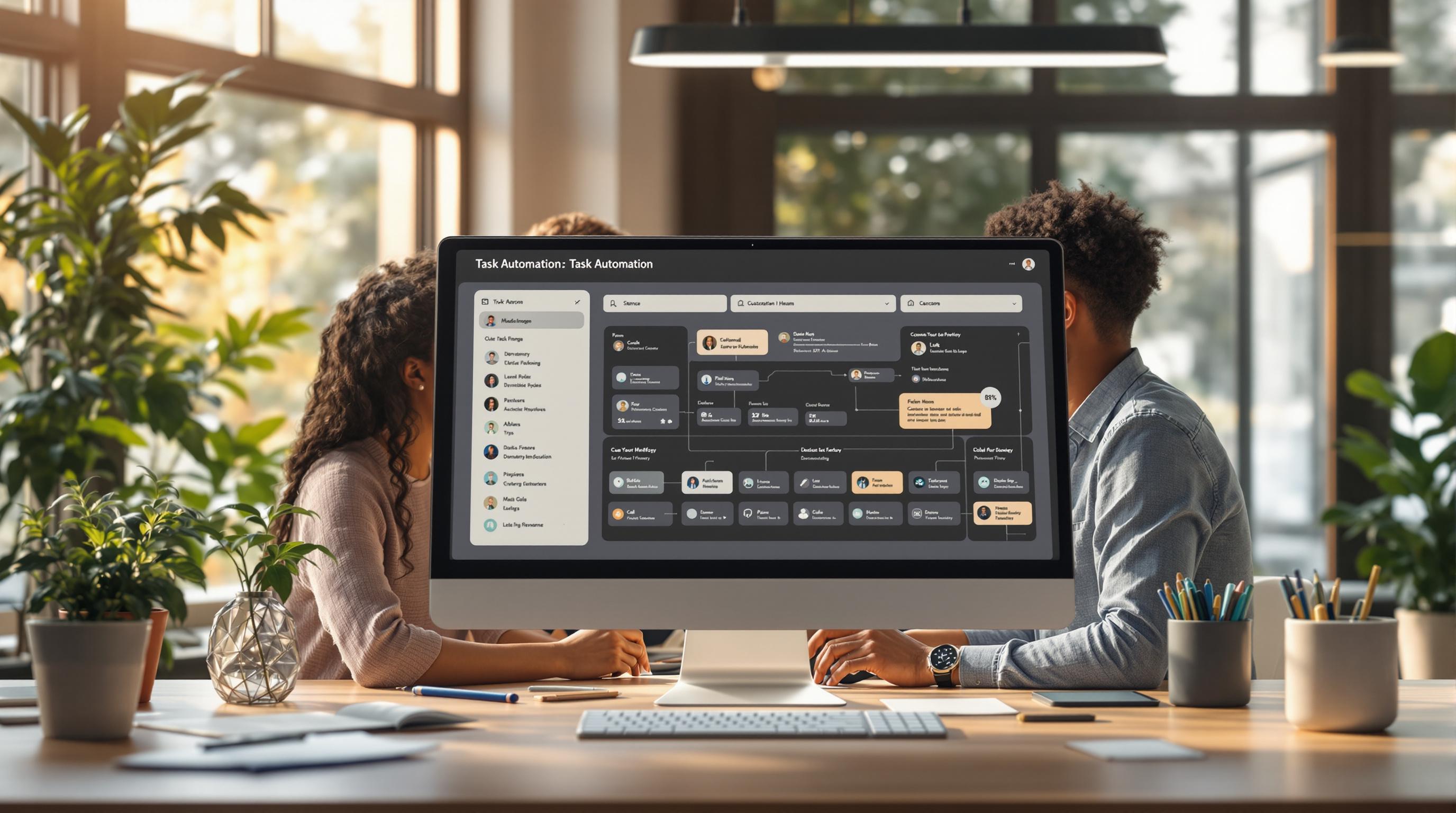Predictive resource utilization helps businesses forecast resource needs and allocate them efficiently. For small and medium-sized enterprises (SMEs) and scale-ups, AI tools simplify this process, reducing costs, preventing shortages, and improving efficiency. This article highlights four AI tools - Mosaic, Asana, Forecast, and Epicflow - that aid in resource management, capacity planning, and task prioritization. Each tool offers unique features suitable for varying business needs.
Key Takeaways:
- Mosaic: Matches team members to projects using AI, predicting profitability and workload.
- Asana: Offers task coordination with flexible pricing, including a free plan for small teams.
- Forecast: Manages timelines, budgets, and resources with AI-driven scheduling and risk evaluation.
- Epicflow: Uses predictive analytics and scenario planning to improve project delivery and efficiency.
Quick Comparison
| Tool | Key Features | Integrations | Starting Price |
|---|---|---|---|
| Mosaic | Resource matching, workload forecasting | Jira, Asana, Trello, MS Teams | Custom pricing |
| Asana | Task management, team collaboration | Slack, Google Drive, MS Teams | Free (paid plans available) |
| Forecast | AI-assisted scheduling, risk analysis | Trello, Slack, Google Drive | Custom pricing (min. 25 users) |
| Epicflow | Task prioritization, scenario planning | Jira, MS Project, Oracle Primavera | $7/user/month |
These tools cater to businesses at different stages, helping them optimize resources and improve outcomes. Start with a tool that aligns with your goals and scale as needed.
AI-Powered Capacity Planning: Full Resource Utilization in Tough Times
Top AI Tools for Predictive Resource Utilization
Here’s a closer look at four AI-driven platforms that are reshaping resource management for small and mid-sized enterprises (SMEs) and growing businesses. These tools use predictive analytics to streamline workforce planning and enhance project outcomes. Let’s dive into what makes each one stand out.
Mosaic
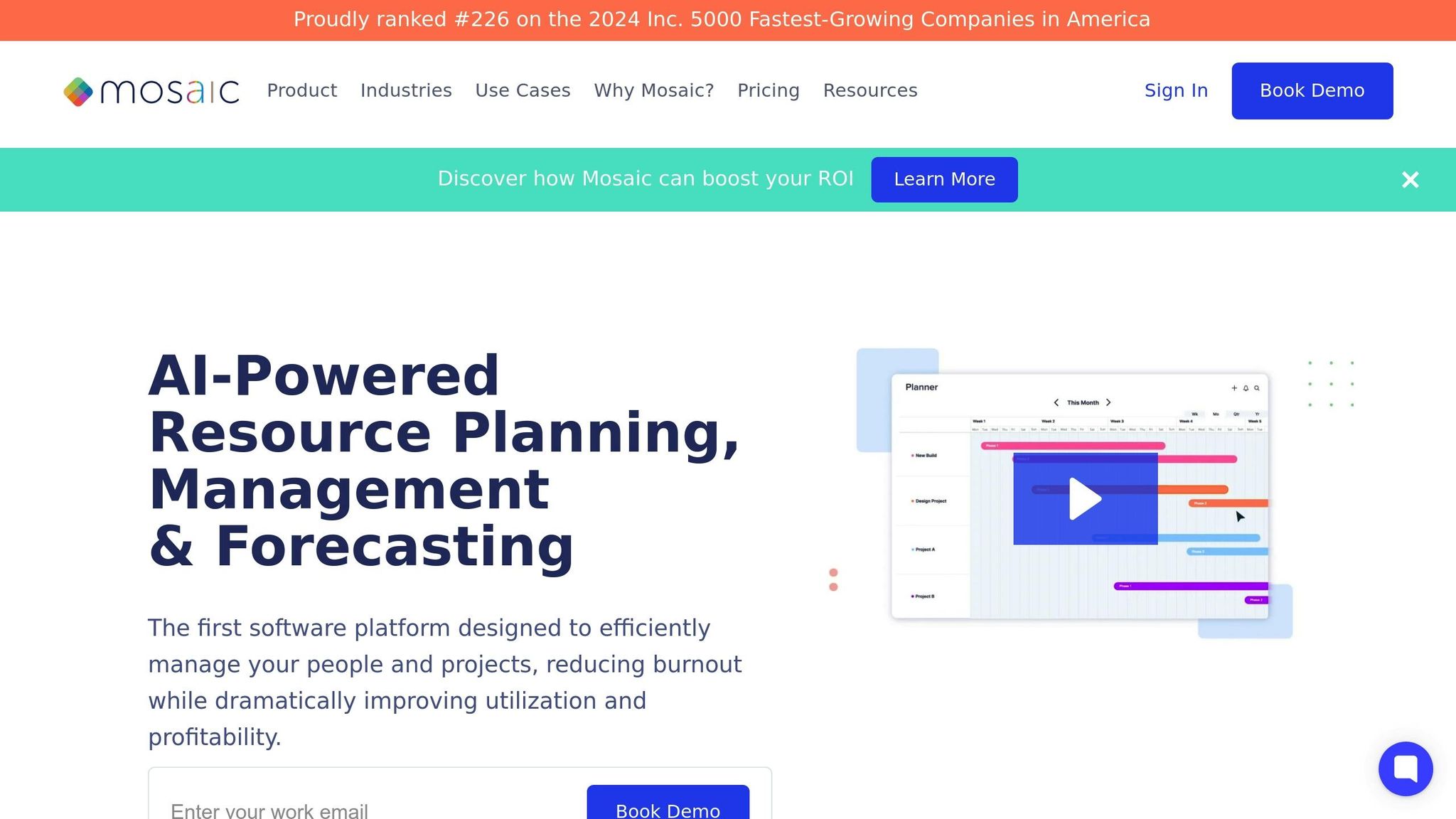
Mosaic combines project finder and team builder tools to ensure resources are effectively utilized while assembling project teams. Its intelligent algorithms predict project profitability, workload, billing, and revenue. What sets Mosaic apart is its dual recommendation system: it matches available team members with suitable projects and identifies the best candidates for open roles on project teams.
Asana
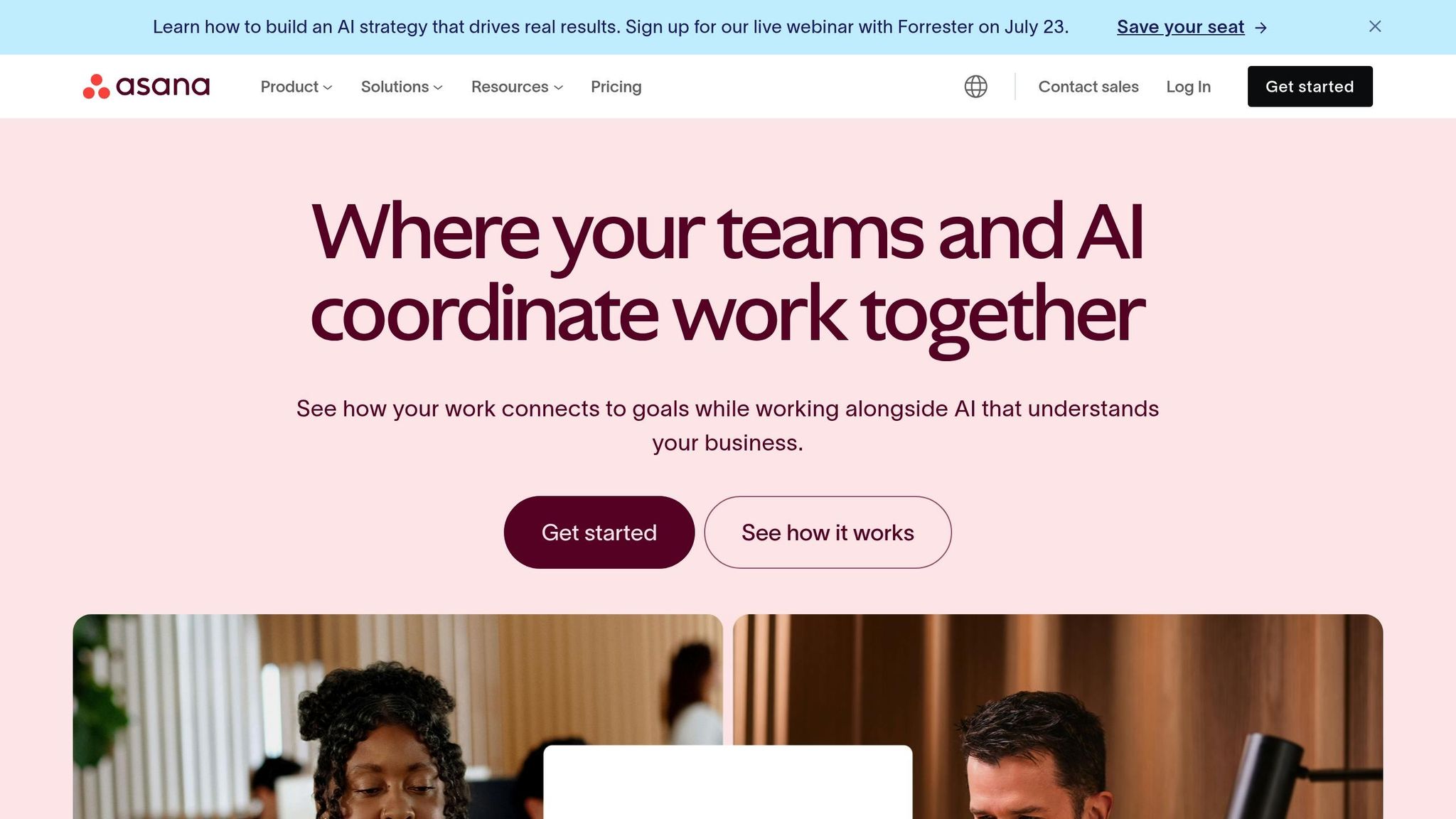
Asana offers a clean, intuitive interface with a "Home" overview that consolidates tasks, making it easier to prioritize.
Pricing Plans for Asana are flexible, catering to teams of all sizes:
- Personal: Free
- Starter: $10.99 per user/month (billed annually) or $13.49 per user/month (billed monthly)
- Advanced: $24.99 per user/month (billed annually) or $30.49 per user/month (billed monthly)
- Enterprise & Enterprise+: Custom pricing
The free version is perfect for individuals or small teams, offering a simple interface with minimal restrictions. The Starter plan is ideal for small to medium teams, enhancing collaboration. For more advanced needs, the paid plans unlock additional features.
Forecast
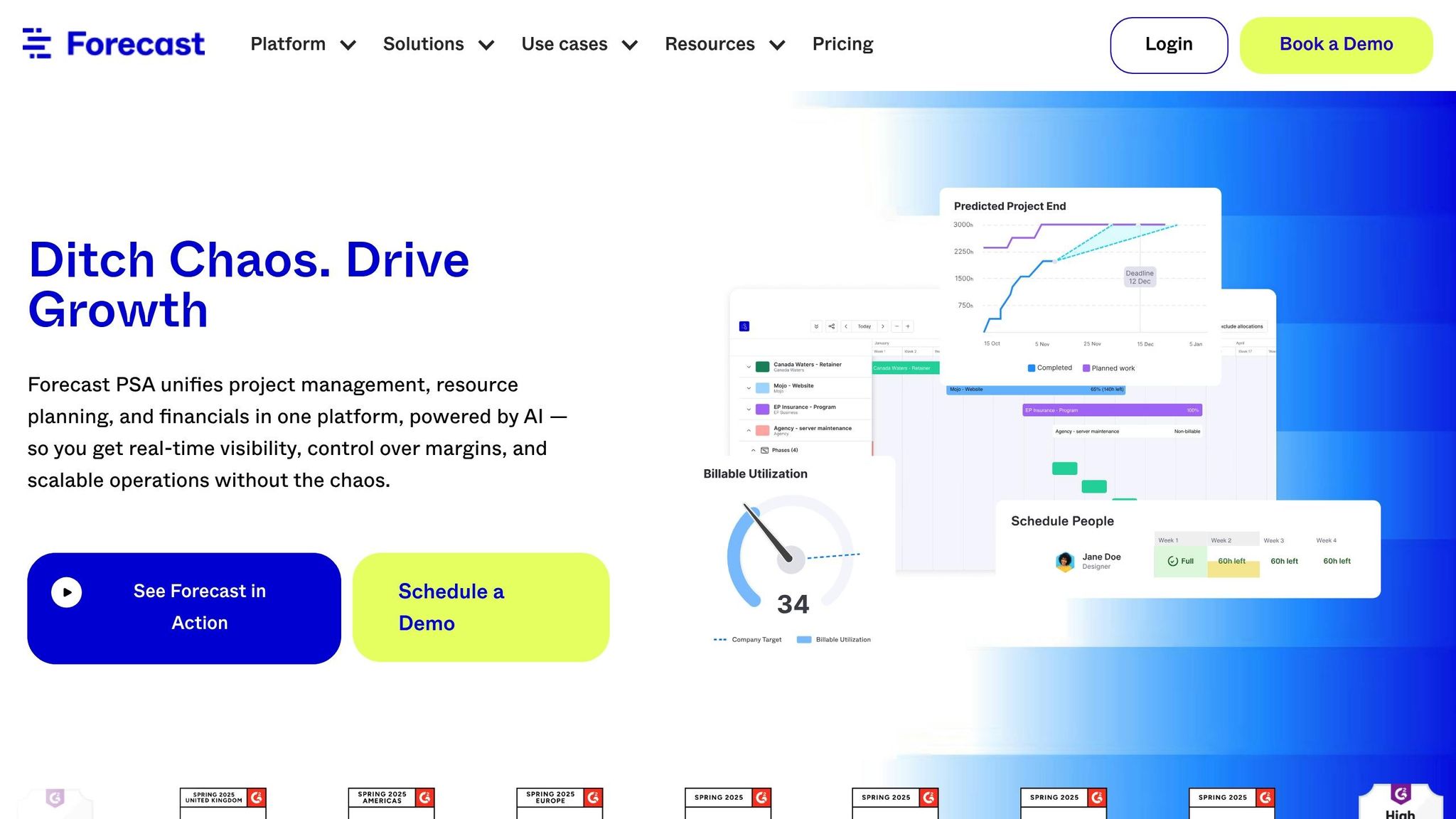
Forecast is an all-in-one solution for project timelines, budgeting, and resource management. It uses historical data to prevent issues like overstaffing or understaffing. The platform integrates resource planning with financial forecasting and timeline predictions, making it a comprehensive tool for mid-sized teams.
Key features include automated scheduling, workload balancing, and identifying potential project risks. Its analytics dashboard provides clear insights into team performance and profitability, helping businesses make smarter resource allocation decisions.
Epicflow
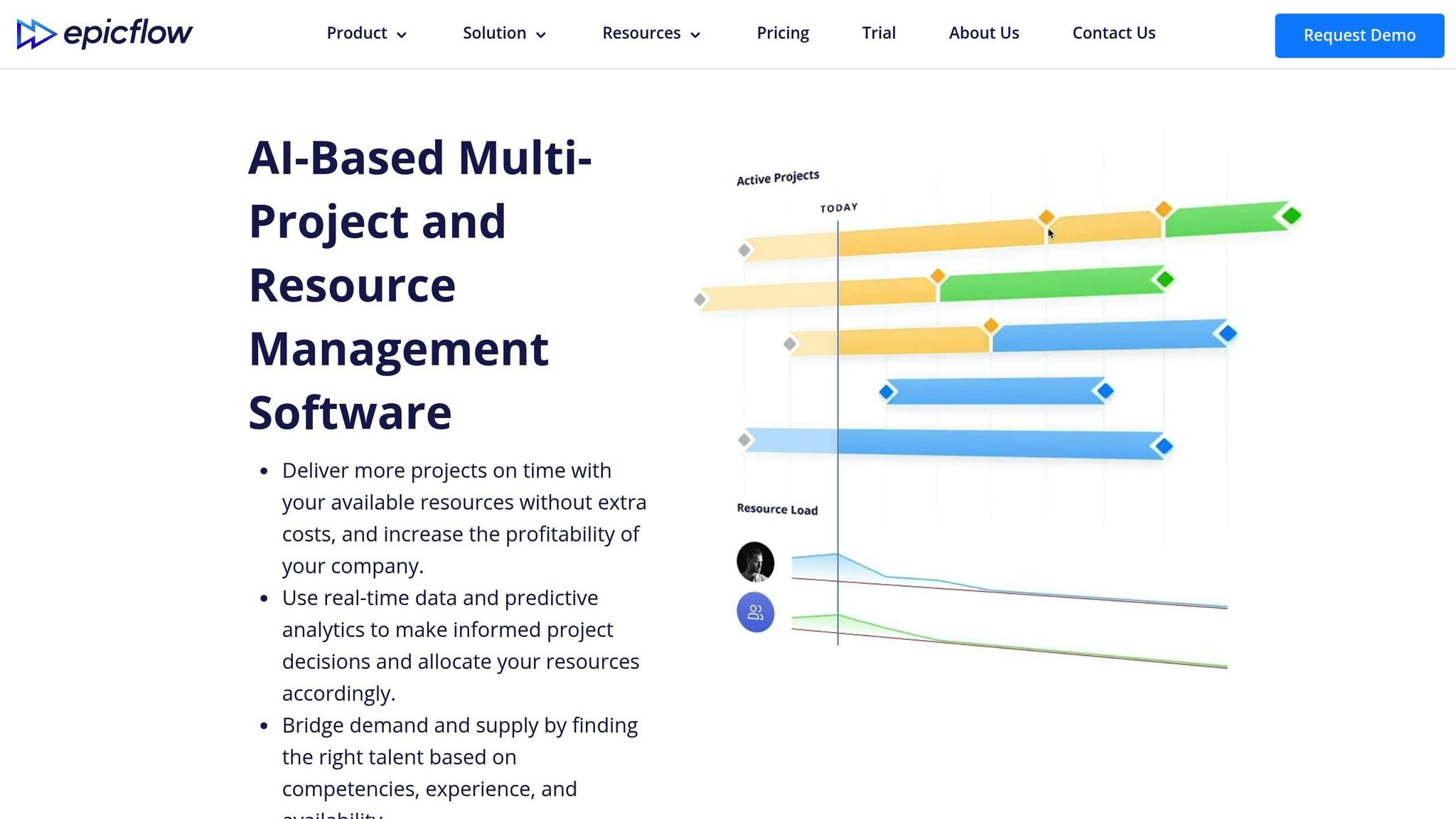
Epicflow specializes in predictive analytics, task prioritization, and scenario simulation. Its machine learning algorithms dynamically calculate task priorities across projects, creating an adaptable Task List.
One of its standout features is scenario planning, which allows businesses to test various resource allocation strategies before implementation. This "what-if" capability helps predict bottlenecks, plan for changes, and evaluate project adjustments.
Epicflow has delivered impressive results for its users. For instance:
- TKF achieved a 200% increase in project delivery and reduced lead time by 50%.
- Dutch telecom company KPN improved deliverability by 62% and efficiency by 21%.
"We increased our output by 200% and reduced lead time by 50% in 2 years. We are also able to give our customers realistic commitments."
- Hans de Boer, R&D Director, TKF
"This product has given us a significant improvement in the amount of projects we can deliver nowadays."
- Jan Tournois, Director at Pilz Netherlands
Epicflow integrates seamlessly with tools like Jira, MS Project, and Oracle Primavera, enhancing existing workflows. The platform offers a Basic plan starting at just $1.00 per month, making it accessible for smaller businesses. While its advanced features require some initial training, companies that invest in learning the platform often see remarkable improvements in efficiency and project delivery.
"Epicflow is in a class of its own. Definitely. It's incredibly easy to use."
- Markus Ossberger, Dep. Head of Division Infrastructure at Wiener Linien
AI for Businesses: A Directory for Finding AI Tools
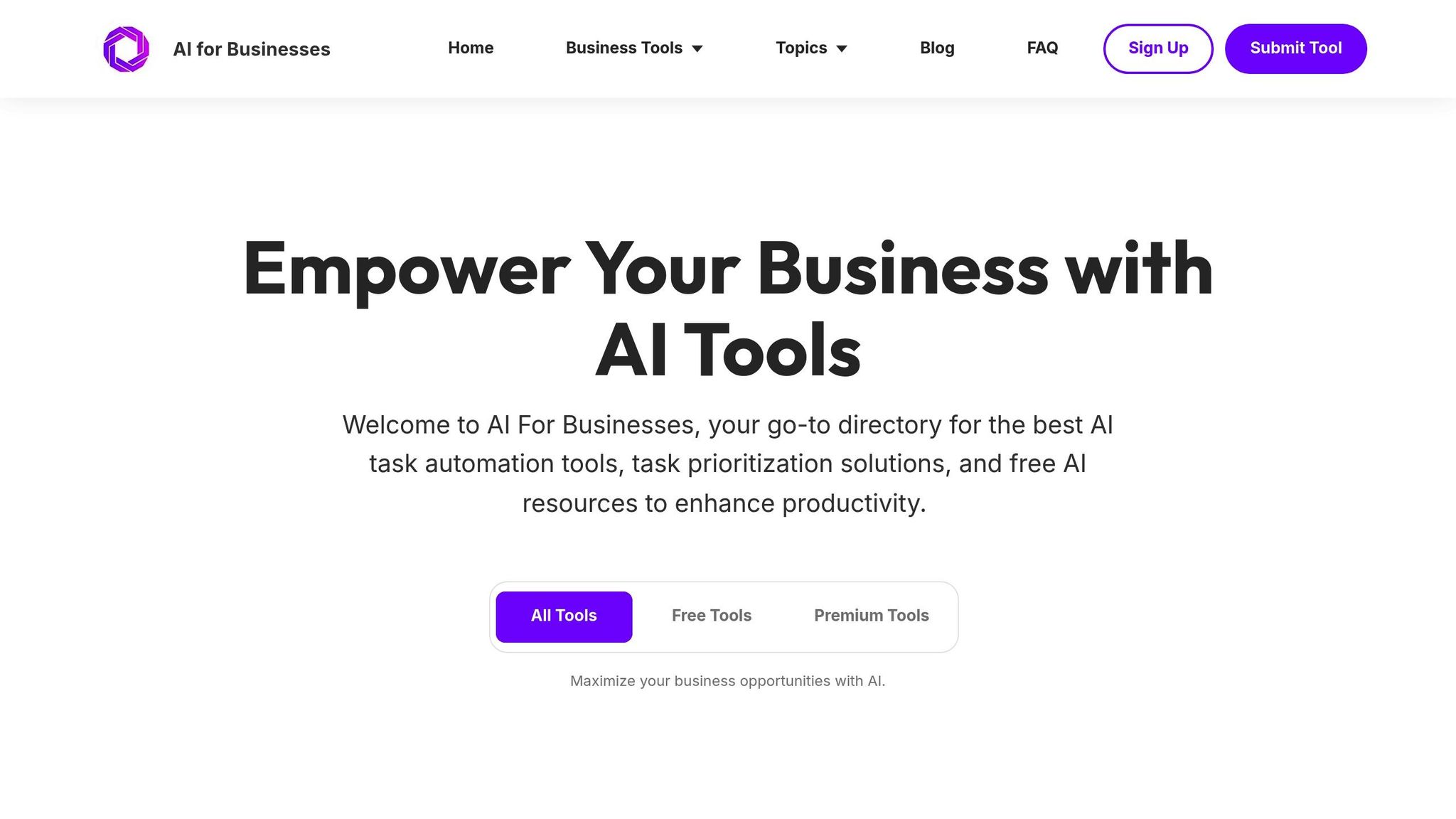
Navigating the sea of AI tools for predictive resource utilization can feel overwhelming, especially with so many options out there. That’s where AI for Businesses (https://aiforbusinesses.com) steps in. This platform offers a carefully curated directory tailored to SMEs and scale-ups aiming to refine their operations with AI-driven solutions. By narrowing the choices, it simplifies decision-making and helps businesses zero in on tools that enhance operational forecasting.
The directory highlights tools like Looka, Rezi, Stability.ai, and Writesonic, all geared toward improving resource management. Whether you're looking to streamline processes or better predict resource needs, these tools offer a solid starting point.
When choosing an AI tool, it’s important to define your goals and conduct a thorough cost–benefit analysis. This means factoring in subscription fees, training expenses, and the complexity of integration. The platform also advises exploring customer use cases, ensuring scalability, and understanding implementation requirements.
Here’s a breakdown of the directory’s pricing plans and what they offer:
| Plan | Price | Features | Best For |
|---|---|---|---|
| Basic | Free | Limited tool access | Businesses beginning their AI journey |
| Pro | $29/month | Full tool access, Priority support | Growing businesses ready to adopt AI |
| Enterprise | Custom pricing | Custom integrations, Dedicated support | Larger organizations with specific needs |
The platform also emphasizes the importance of pilot testing before committing to a full rollout. Additionally, it addresses key considerations like bias detection and regulatory compliance, ensuring businesses make informed and responsible choices.
"By integrating privacy-by-design principles in AI initiatives, whether developed in-house or acquired through third party vendors, organizations can focus on the importance of data privacy at the outset and lower the risk of data exposure."
– Anup Iyer, Senior Counsel, Moore & Van Allen
For SMEs focusing on predictive resource allocation, this directory provides in-depth comparisons and performance reviews to guide smarter decisions. Its curated selection ensures that every listed tool has been vetted for its ability to drive tangible business improvements, helping companies align their choices with their growth goals.
sbb-itb-bec6a7e
Tool Comparison Table
Here’s a quick breakdown of key features, integrations, and pricing for some of the top tools available. Use this summary to help you decide which one fits your needs best.
| Tool | Key Features | Integrations | Pricing (USD) |
|---|---|---|---|
| Mosaic | Resource management, visual planning, workload forecasting | Jira, Asana, Trello, Microsoft Teams | Multiple tiers for different business sizes |
| Asana | Task coordination, project planning, team collaboration | Slack, Google Drive, Microsoft Teams | Free plan available; paid plans also offered |
| Forecast | AI-assisted task management, capacity planning, risk evaluation | Asana, Trello, Google Drive, Slack | Minimum 25 users; premium pricing applies |
| Epicflow | Predictive analytics, task prioritization, scenario planning | Jira, MS Project, Oracle Primavera | Starting at $7/user/month |
From the table, you can see how pricing and features vary across these tools. For instance, Asana provides a free plan for small teams, while Forecast is better suited for larger organizations with its 25-user minimum requirement.
Integrations are another key factor. Tools like Mosaic and Asana connect with popular platforms such as Slack, Jira, and Microsoft Teams, making it easier to streamline workflows. As Carlie Idoine, a vice president analyst at Gartner, puts it:
"You don't have to be an expert to go in and use these tools anymore".
Each tool brings something unique to the table. For example, Mosaic and Forecast cater to businesses with more complex needs, offering advanced features like workload forecasting and AI-driven task management. Looking ahead, the adoption of AI-powered predictive tools is expected to rise significantly. By 2025, over 55% of organizations are projected to implement these tools to enhance decision-making and operational efficiency, especially in industries like finance, marketing, and supply chain management.
This comparison highlights how these tools can support smarter resource management and help you find a scalable solution for your business.
Conclusion
Predictive resource utilization has become crucial for SMEs and scale-ups aiming to stay ahead in today’s fast-paced market. With nearly 62% of businesses adopting AI tools that can boost productivity by as much as 133%, the potential benefits are hard to ignore.
Take, for example, a small online fashion retailer that increased its sales conversion rate by 30% using AI-driven recommendation engines. Or a local dental clinic that cut appointment no-show rates by 40% after implementing an AI-powered scheduling system. These examples highlight how AI is no longer reserved for large corporations - it’s accessible and impactful for smaller businesses, too.
Among the tools we've discussed - Mosaic, Asana, Forecast, and Epicflow - each brings something unique to the table, catering to various business needs and budgets. Whether your focus is advanced workload forecasting or simple task management, there’s a solution designed to match your growth stage and operational goals. Together, these tools make adopting AI more manageable and effective.
For a more streamlined approach to finding the right tools, platforms like AI for Businesses offer curated directories of vetted AI solutions tailored for SMEs and scale-ups. From free options to enterprise-grade tools, this resource simplifies the search process, helping businesses at every stage of their AI journey.
The key is to start small and scale gradually. Identify areas where AI can make the most impact, experiment with accessible tools, and invest in upskilling your team. As Microsoft CEO Satya Nadella wisely said:
"Artificial Intelligence will redefine your business. The question is: Will you harness its power to thrive?"
With nearly half of small businesses - 47% - already utilizing AI in some capacity, the real challenge lies in acting quickly to secure a competitive edge. The time to embrace these solutions is now.
FAQs
What’s the best way to choose an AI tool for predictive resource utilization in my small business?
Choosing the Right AI Tool for Predictive Resource Utilization
Start by pinpointing your business's specific challenges - whether that's streamlining inventory management, optimizing staffing, or reducing energy consumption. Once you've identified your priorities, focus on tools that have a strong track record in your industry and offer features that directly address your goals. User reviews can also provide valuable insights into how well a tool performs in real-world scenarios.
When evaluating options, pay attention to key factors like ease of use, pricing, scalability, and how seamlessly the tool integrates with your current systems. To minimize risk, consider running a pilot program to see how effectively it meets your needs before making a long-term commitment. These steps will help you choose a solution that improves resource management and supports your business's growth.
What are the main advantages of using AI tools like Mosaic and Epicflow for managing projects and planning resources?
AI tools such as Mosaic and Epicflow provide real-time insights and predictive analytics, making project management and resource planning much smoother. These tools can predict workloads, spot potential bottlenecks, and fine-tune resource allocation to help keep projects on schedule and within budget.
Using these tools allows businesses to work more efficiently, minimize risks, and make smarter, data-driven decisions. The result? Enhanced productivity and a better chance of achieving their goals.
Can AI tools for predictive resource utilization work with platforms like Jira or Slack?
Yes, plenty of AI tools focused on predictive resource utilization work smoothly with platforms like Jira and Slack. For example, certain tools let you create and manage Jira tasks directly from Slack conversations. This simplifies workflows and minimizes the need to jump between different apps.
These integrations can boost productivity by automating repetitive tasks, improving team communication, and making collaboration more efficient - all within the tools your team already uses. Just make sure to verify compatibility with your current setup to get the most out of these features.


